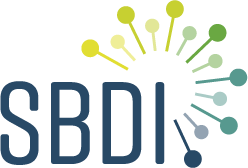Templates for publishing data
We encourage data holders to publish the richest data possible to ensure their use across a wider range of research approaches and questions, but not every dataset includes information at the same level of detail. Sharing what is available through GBIF and SBDI is valuable, because even partial information answers some important questions.
Below are descriptions of the four classes of datasets currently supported:
Resources metadata
At its simplest level, GBIF and SBDI allows institutions to create datasets describing undigitized resources like those in natural history and other collections. All three other dataset classes include this basic information, but this ‘metadata-only’ class offers researchers a valuable tool for discovering and learning about evidence not yet available online. They can also help assess the relative importance and value of undigitized collections and set priorities for future digitization. As with all datasets, GBIF ensures that each metadata dataset is associated with a unique Digital Object Identifier (DOI) to streamline data users’ citation of these resources.
Checklist data
Datasets can also provide a catalog or list of named organisms, or taxa. While they may include additional details like local species names or specimen citations, these ‘checklists’ typically categorize information along taxonomic, geographic, and thematic lines, or some combination of the three. Checklists function as a rapid summary or baseline inventory of taxa in a given context.
Occurrence data
Other datasets published through GBIF and SBDI have sufficiently consistent detail to contribute information about the location of individual organisms in time and space—that is, they offer evidence of the occurrence of a species (or other taxon) at a particular place on a specified date. Occurrence datasets make up the core of data published through GBIF and SBDI, and examples can range from specimens and fossils in natural history collections, observations by field researchers and citizen scientists, and data gathered from camera traps or remote-sensing satellites.
Occurrence records in these datasets sometimes provide only general locality information, sometimes simply identifying the country, but in many cases more precise locations and geographic coordinates support fine-scale analysis and mapping of species distributions.
- Browse occurrence datasets
- DwC-A template for occurrence datasets
- Data quality requirements for occurrences
Sampling-event data
Datasets sometimes provide greater detail, not only offering evidence that a species occurred at a given location and date, but also making it possible to assess community composition for broader taxonomic groups or even the abundance of species at multiple times and places. These quantitative or sampling-event datasets typically derive from standard protocols for measuring and monitoring biodiversity like vegetation transects, bird censuses and freshwater or marine sampling.
By indicating the methods, events and relative abundance of species recorded in a sample, these datasets improve comparisons with data collected using the same protocols at different times and places—in some cases, even leading researchers to infer the absence of particular species from particular sites.
- Introduction to sampling-event data
- Browse sampling-event datasets
- DwC-A template for sampling-event datasets
- Data quality requirements for sampling events
Contact gbif@nrm.se or use the SBDI Support form if you have questions about data mobilization, publishing licenses or data standards.




